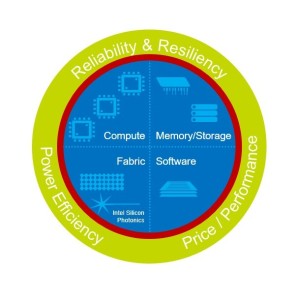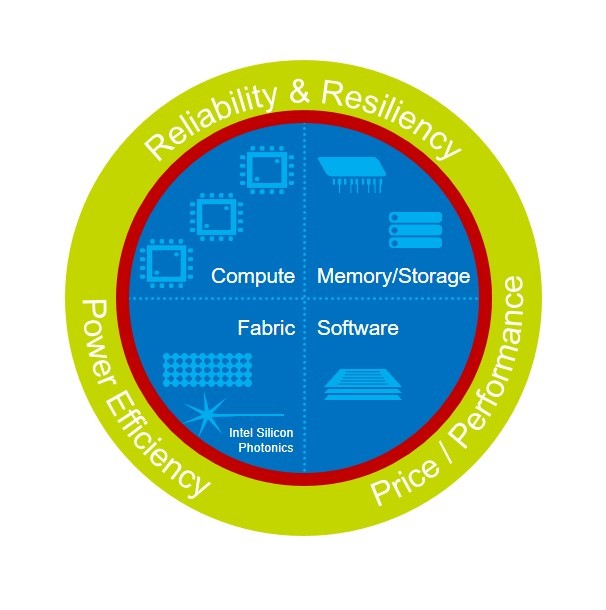This is the first in a four-part series about the Intel® Scalable System Framework. Other contributions will cover Intel® Enterprise Edition for Lustre* software, HPC software and the OpenHPC community, and Intel® Xeon Phi™ processor.

Even though it’s a new generation fabric, Intel Omni Path Architecture (OPA) is still backwards compatible with the many applications in the HPC community that were written using the OpenFabrics Alliance* software stack for InfiniBand. So, existing InfiniBand users will be able to run their codes that are based on the OpenFabrics Enterprise Distribution (OFED) software on Intel OPA. Additionally, Intel has open sourced the key software elements of their fabric to allow integration of Intel OPA into the OFED stack, which several Linux* distributions include in their packages.
As has been proven by many chip makers, integrating more technologies into the processor silicon makes for an overall more efficient system. So, Intel will be tightly integrating the Intel OPA silicon into its processors. This can decrease latency across the pipeline and enable faster and more efficient data movement—from node, through the fabric, to storage and back.
Intel Omni Path Architecture in Bridges at the Pittsburgh Supercomputing Center
The first deployment of Intel Omni Path Architecture occurred in February at the Pittsburgh Supercomputing Center (PSC) in a unique, converged High Performance Computing (HPC) and High Performance Data Analytics (HPDA) architecture. The system, named Bridges, provides uniquely flexible, interoperating capabilities to empower research communities that previously have not used HPC and enable new data-driven insights. Yet it also provides exceptional performance to traditional HPC users. Intel OPA is core to its design.
During acceptance testing, Intel OPA has performed beyond our target levels,” said Nick Nystrom, Director of Strategic Applications at Pittsburgh Supercomputing Center. The first real-world applications to be run on Bridges with Intel OPA were visualization codes developed by programmers participating in the Midas Mission Public Health Hackathon that took place at PSC on February 25 and 26.
“The MIDAS MISSION Public Health Hackathon was a great experience, and having access to resources like Bridges with its extremely high-speed Intel Omni-Path network was extremely helpful in producing data-driven visualizations,” commented Jay DePasse from the Hackathon’s Team vzt.
Adds Nystrom, “Community interest is very high, and early indications are that Intel Omni Path Architecture will make data analytics substantially more productive.”
Find more information on Intel Omni-Path Architecture




